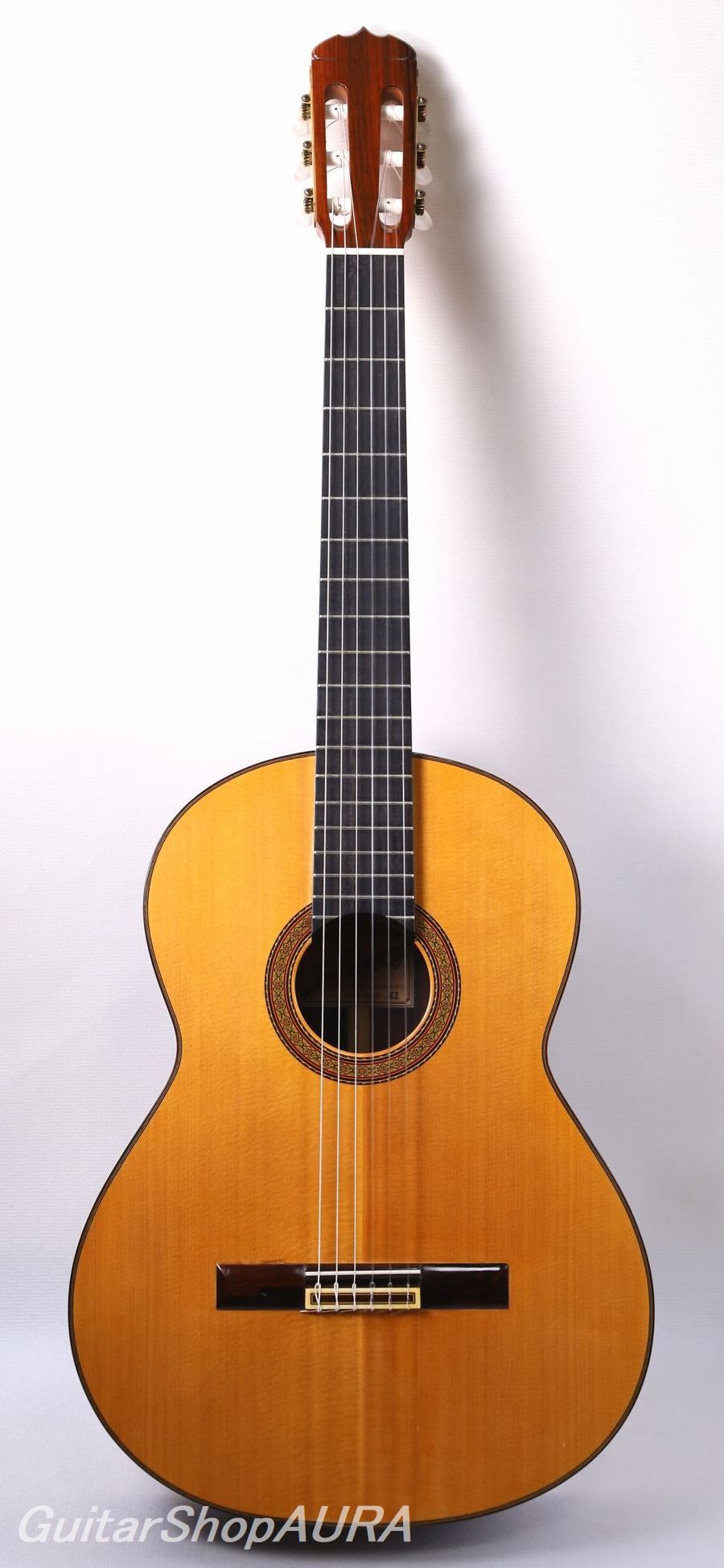
| Instrument | Jose Ramirez III |
| Category | Imported Classical Guitars 〔Vintage〕 |
| Number/Model | MT Stamp |
| Scale length | 664mm |
| Country | Spain |
| Year | 1962Year |
| Top | Solid Spruce |
| Side&Back | Solid South American Rosewood |
| Condition※ | 7 |
| List price | INQUIRE |
| Price (tax included) | Please Inquire |
| option | with Hardcase |
Click to enlarge the photos below
Neck: Cedro
Fingerboard: Ebony
Finish(Top): Shellac
Finish(Back & Sides): Shellac
Tuning Machines: Fustero
String Height(1st): 2.7mm
String Height(6th): 4.2mm
[Profile]
Jose Ramirez – A Legacy of Over a Century
Jose Ramirez is one of the most renowned and historic names in the world of Spanish guitar making. Founded over 100 years ago, the Ramirez workshop continues to thrive as a global brand that has profoundly shaped the history of classical guitar construction. From the time of Jose Ramirez I (1858–1923) to the present-day Jose Ramirez V, the workshop has remained a cornerstone of Spanish luthiery, celebrated for its innovation, craftsmanship, and enduring legacy.
Among all generations, it was Jose Ramirez III (1922–1995) who brought the brand to unprecedented heights, so much so that his era is often referred to as the 'Ramirez dynasty.' His bold innovations combined with widespread appeal won the admiration of guitarists and enthusiasts worldwide. In the late 1950s and throughout the 1960s, the Ramirez workshop was led by master craftsmen such as Paulino Bernabe and Mariano Tezanos, who established a unique system of production that maintained the highest artisanal standards while enabling larger-scale manufacturing.
In 1964, Ramirez III introduced the flagship model “1A”, a revolutionary guitar featuring red cedar tops (a departure from traditional spruce), deeper body dimensions, a double-sided construction with inner cypress lining, a 664mm scale length, and a durable urea-based finish that replaced traditional French polish. These changes not only enhanced the instrument’s durability but also produced the signature “Ramirez tone”—a sweet, rich, and elegant sound—paired with the now-iconic red-tinted body. The 1A quickly became one of the most recognized and celebrated classical guitars in history.
Ramirez III’s reforms were groundbreaking both in terms of guitar design and strategic market positioning, setting a new standard that influenced luthiers around the world and reshaped the identity of the classical guitar.
His son, Jose Ramirez IV (1953–2000), began apprenticing under his father at age 18 and was officially recognized as a luthier in 1977. Together with his sister Amalia Ramirez, he took over the brand's leadership in 1988. Continuing his father’s philosophy, he introduced modern marketing strategies such as developing 'Estudio' (student) models and adopting the standard 650mm scale length, successfully expanding the company’s global reach. Tragically, he passed away just five years after his father in 2000.
Since then, Amalia Ramirez has led the workshop with flexible and innovative product development. However, collectors and players continue to revere instruments from the Ramirez III and IV era, particularly those from the 1960s, identifiable by the maker’s initials inside the body—such as those crafted by Mariano Tezanos—widely regarded as the golden age of Ramirez guitars.
[Description]
The bracing design of this instrument features one harmonic bar above and below the sound hole (towards the neck and bridge sides respectively), with a thin reinforcement plate placed on each side. The upper harmonic bar is straight, while the lower bar is slightly bent near the center and meets the sides of the guitar slightly closer to the neck on both the treble and bass sides. The fan braces are symmetrically arranged with seven braces on each side, extending almost to the bottom of the soundboard, but there is no traditional closing bar at the bottom. A thin reinforcement plate of nearly the same size is also attached at the bridge plate area. This design—featuring the harmonic bar bent towards the neck side and the absence of a closing bar (which typically consists of two bars arranged in a V or inverted V shape to support the ends of the fan braces)—is unique to the second-generation maker. It allows a wider vibrational area on the lower part of the soundboard on both bass and treble sides, which is actually quite rare in classical guitar construction. The guitar’s resonance is set slightly below the note A.
The entire guitar is finished with shellac lacquer, though it has likely been refinished once. The current appearance is clean, with only fine and shallow scratches scattered across the surface. There are two repaired cracks on the soundboard running from the bridge plate to the bottom, internally reinforced with patch plates. The sides and back show no major repairs such as cracks, and the finish displays only minor wear, remaining in good overall condition. The back of the neck has also probably been refinished, showing only slight fingernail marks from playing but otherwise in clean condition.
The fingerboard has undergone adjustments involving a double fingerboard setup, and the neck currently maintains a straight alignment. The frets are also in proper condition. The neck shape is a standard thickness D-shape. String action at the 12th fret measures 2.7 mm on the 1st string and 4.2 mm on the 6th string, with 1.5 to 2.5 mm of saddle height remaining, allowing for further lowering to suit personal preference.
The scale length is 664 mm, but the string tension is moderate, and the guitar is set up for easy playability on the left hand. Therefore, the current setup does not cause any particular discomfort. The instrument weighs 1.56 kg.